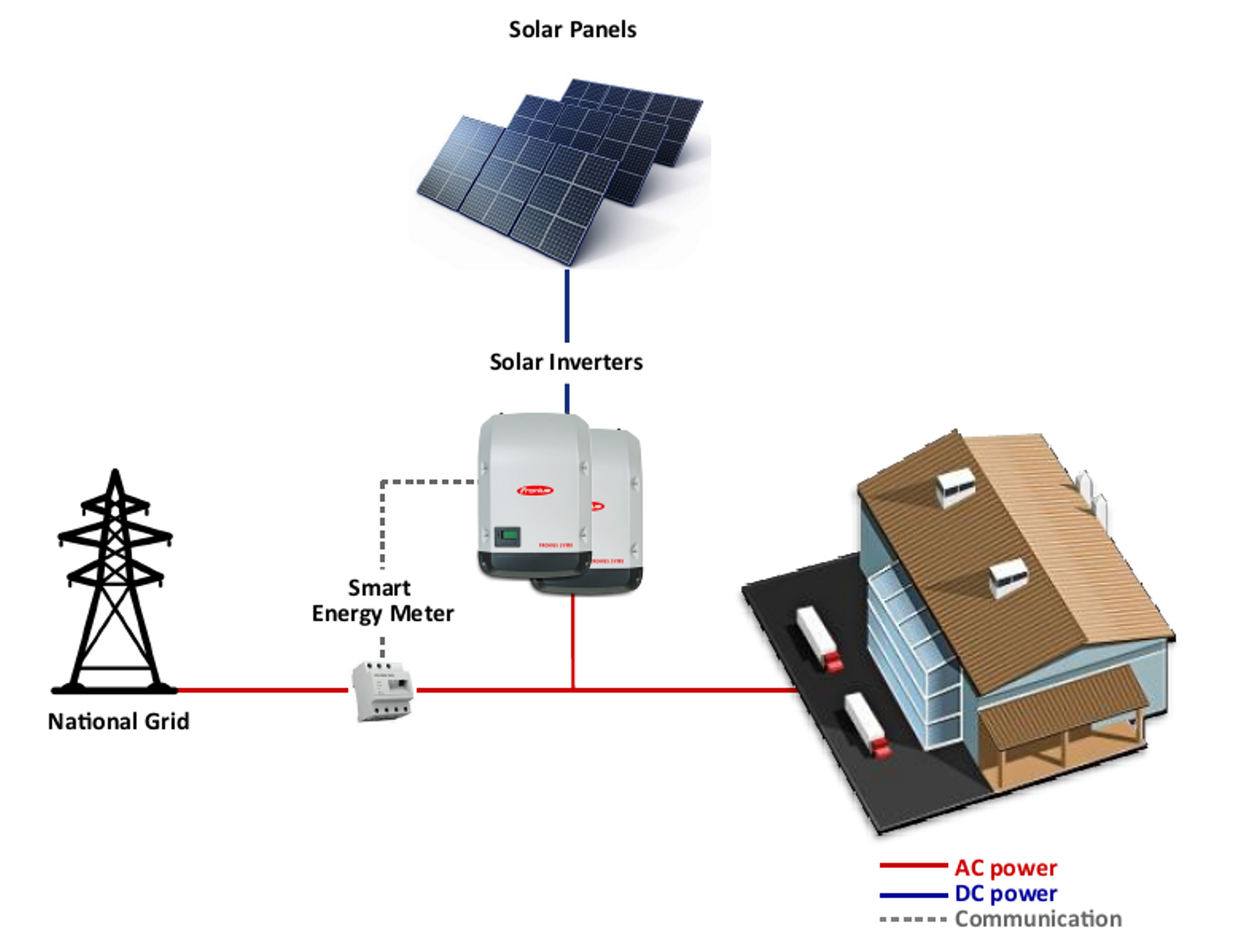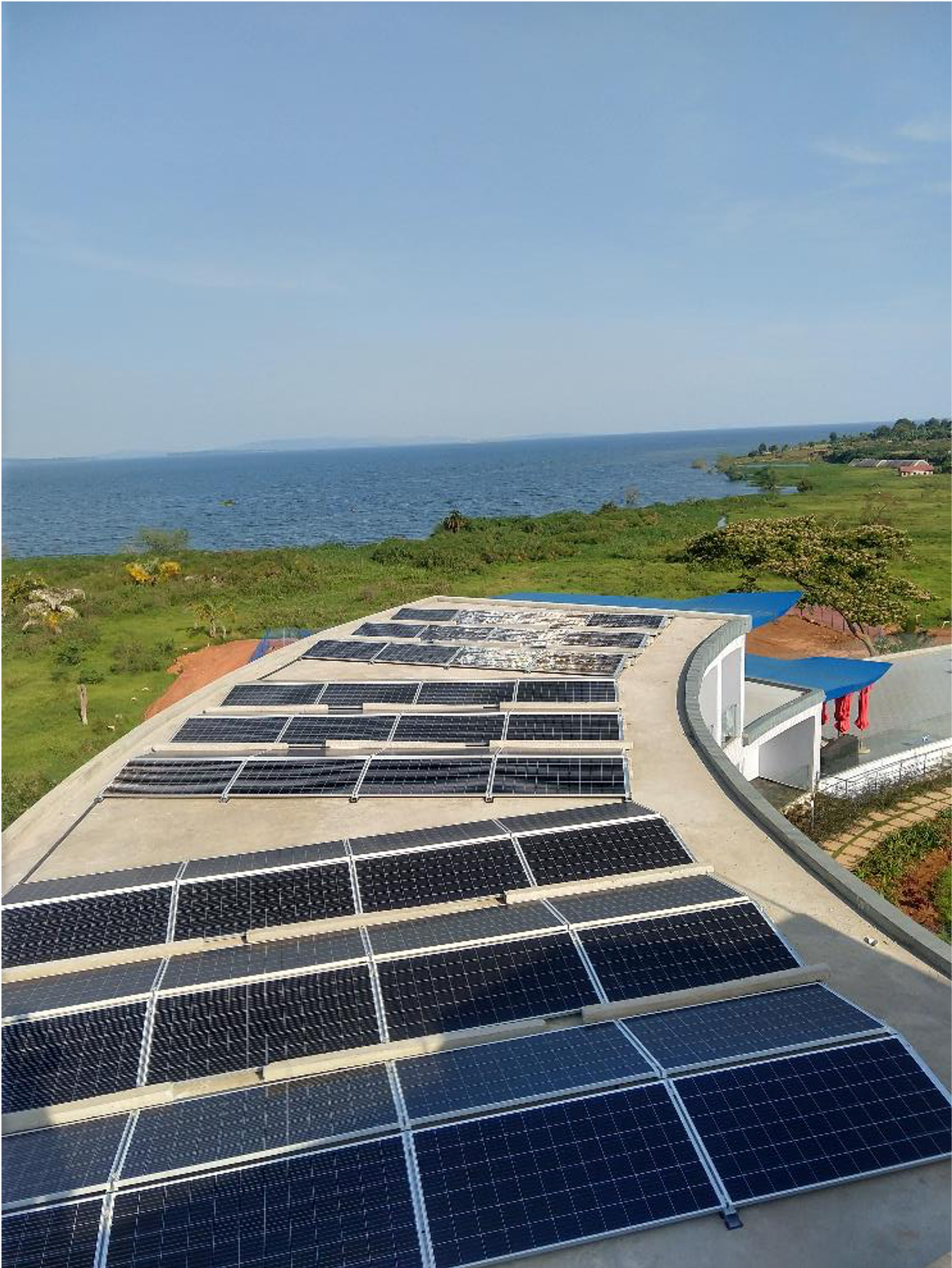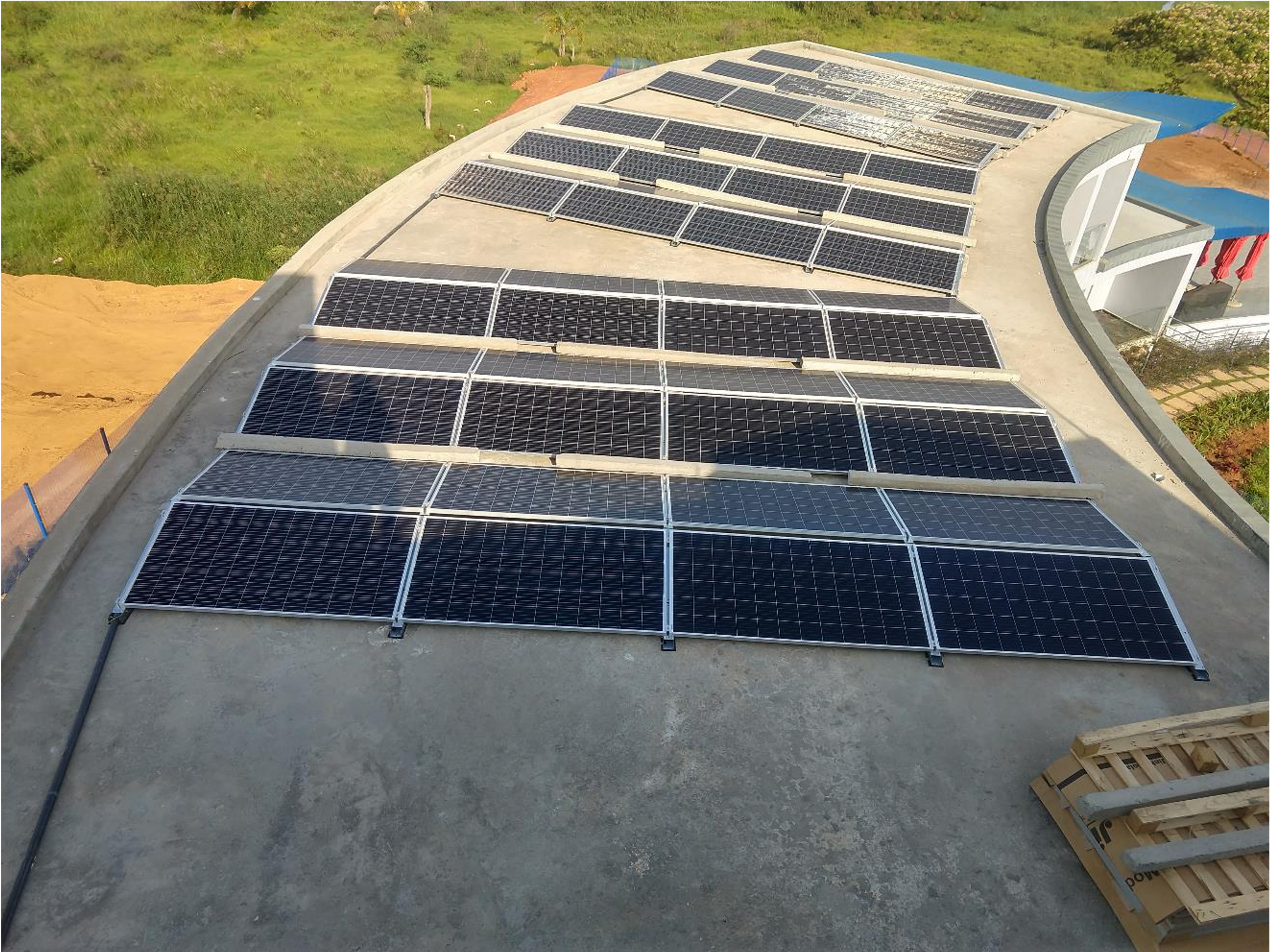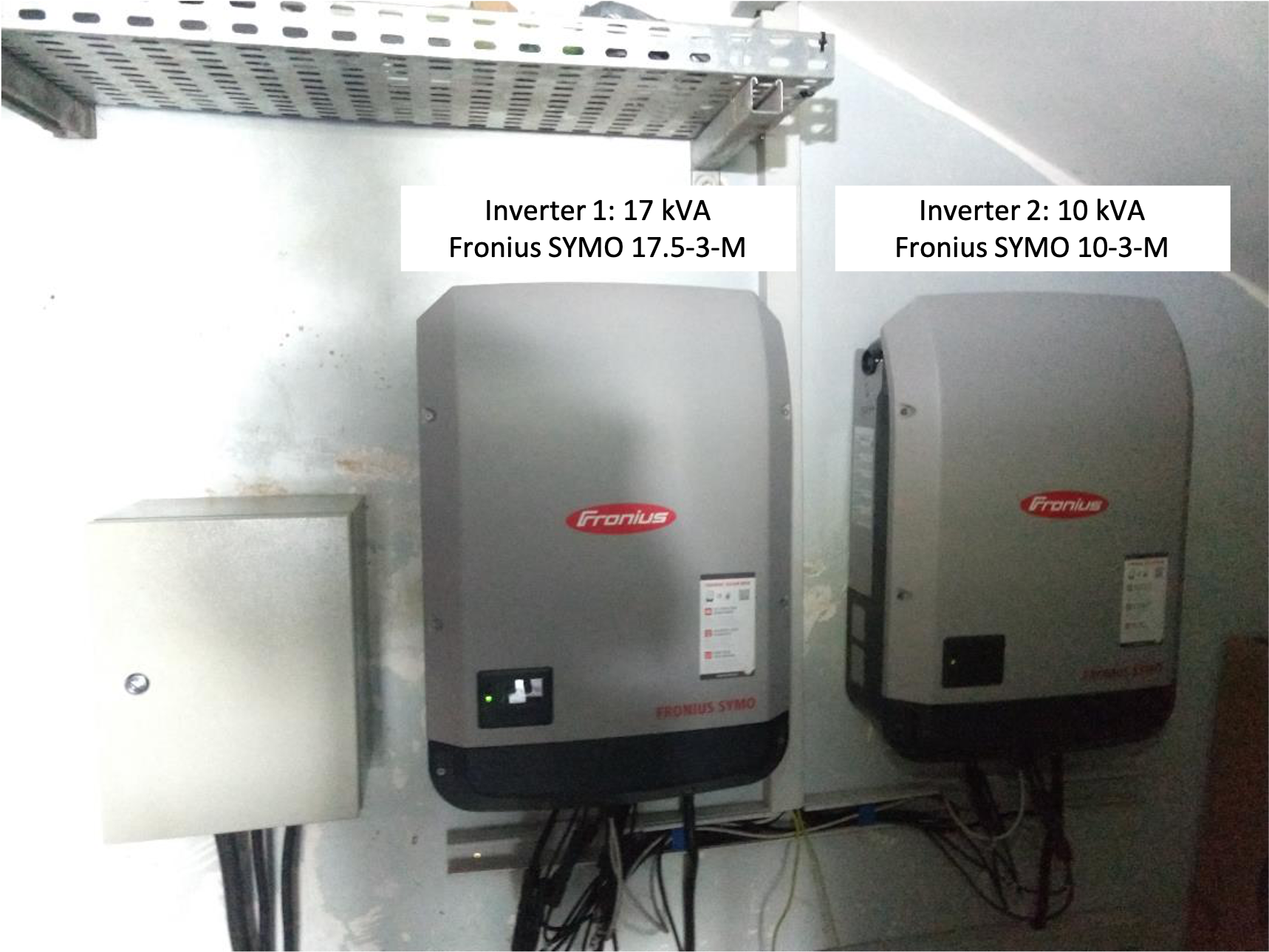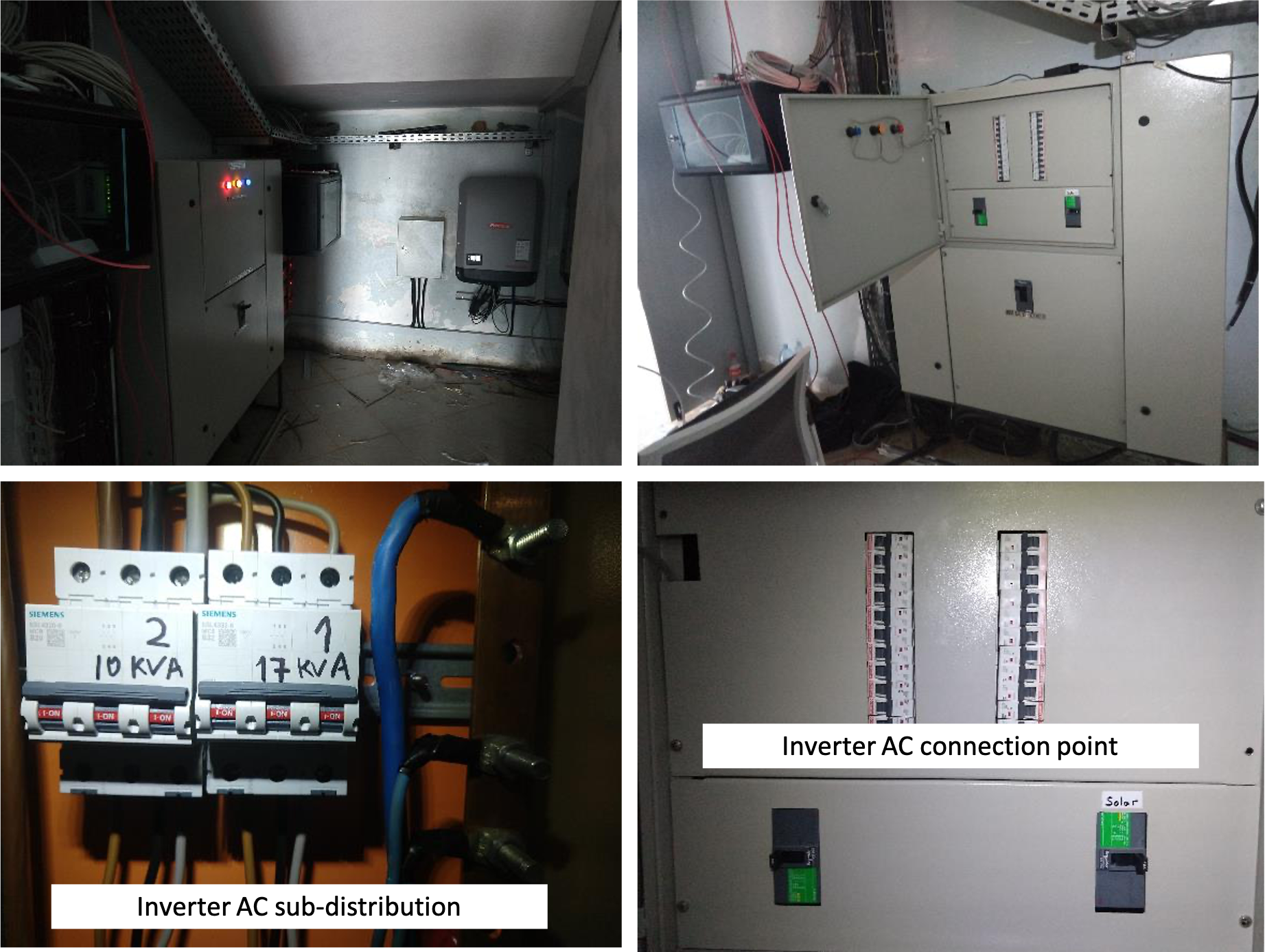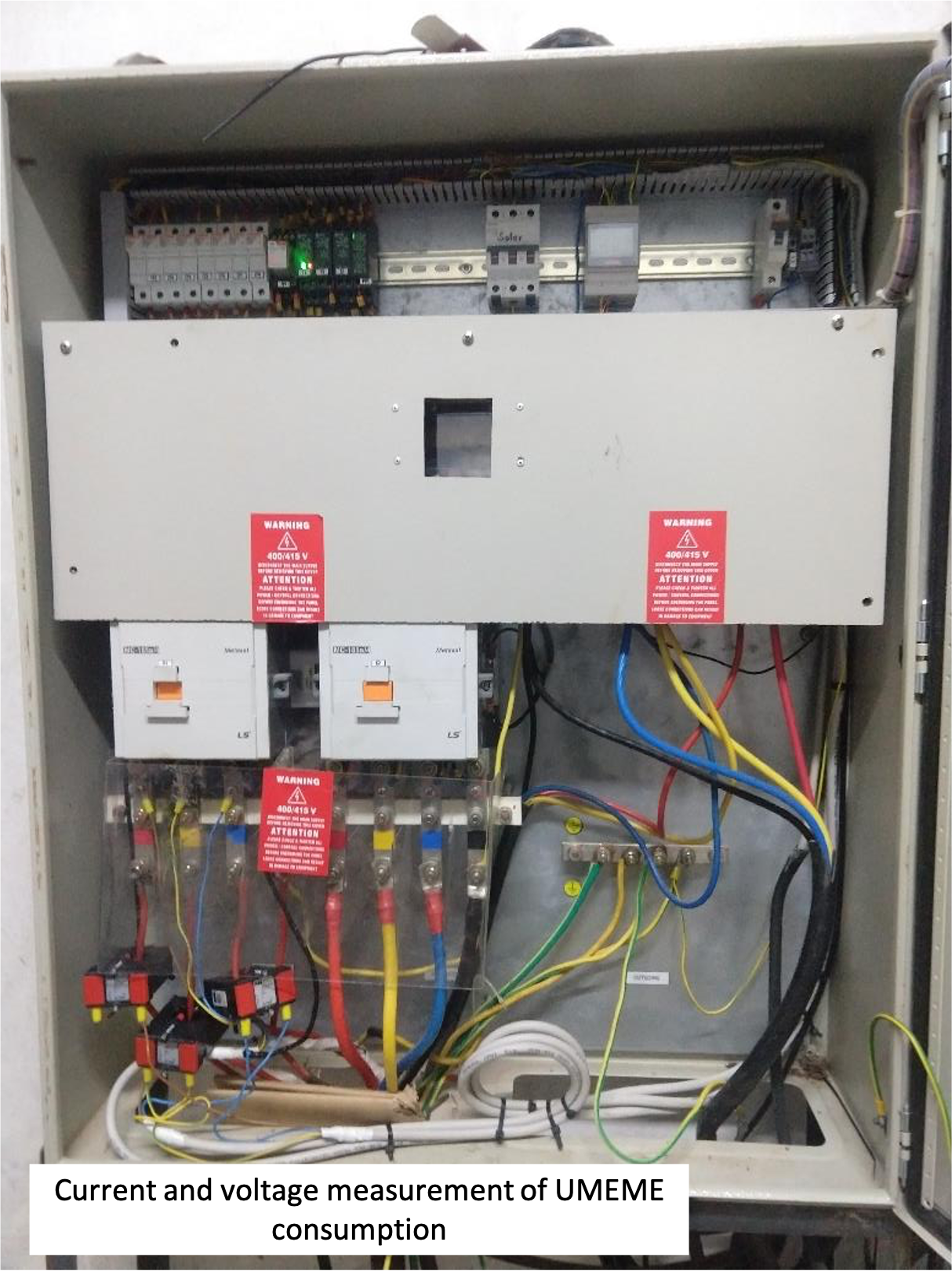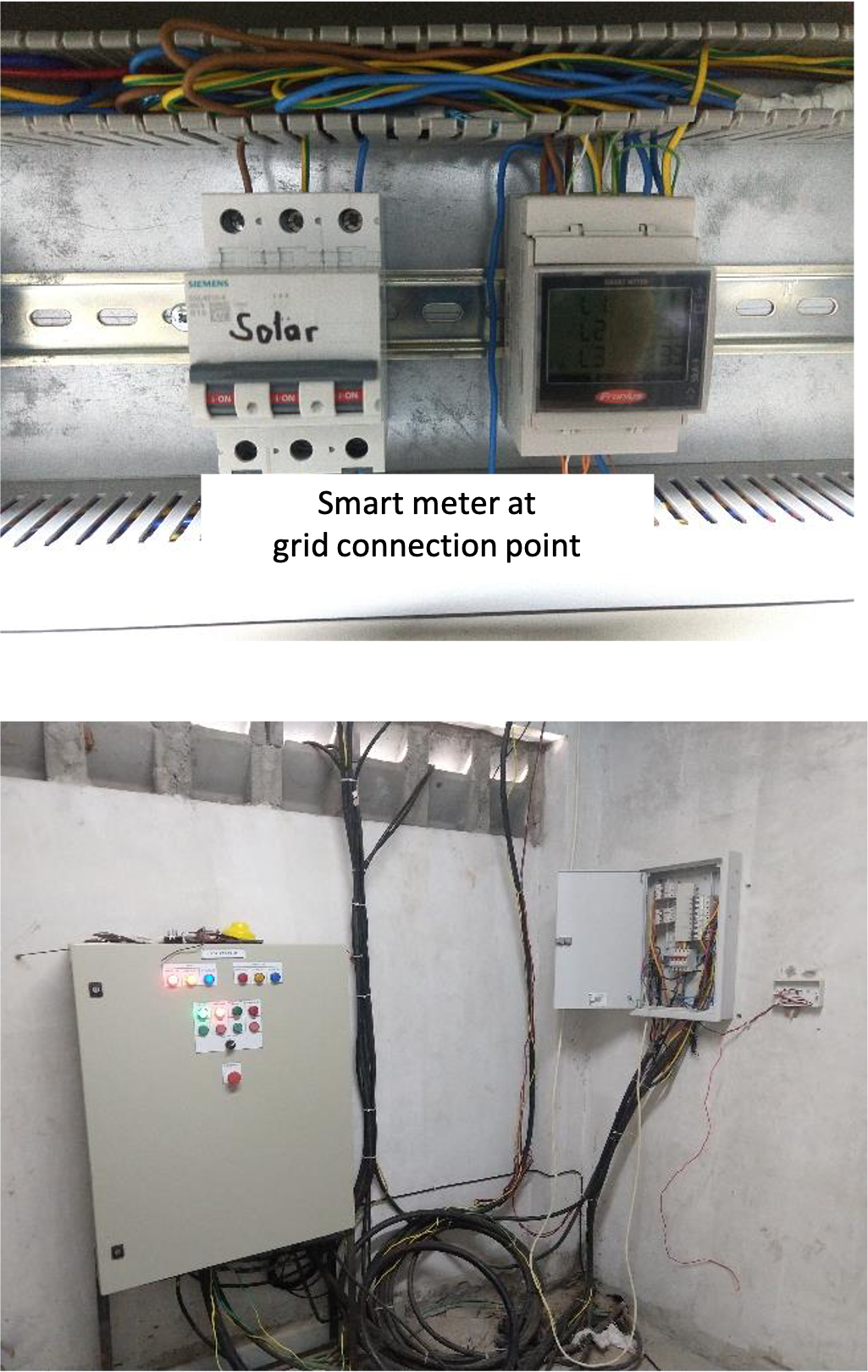28 kWp Solar PV Solution for Hotel in Uganda
System Layout
The flexible and scalable design basis provides the opportunity to extend the system in future. This can be the installation of more solar panels for increased generation capacity as well as the installation of a battery storage solution for the storage of solar electricity for night-time use and to provide a power back-up.
Operational Scenarios
The smart system control operates the solar system automatically. No manual action is needed if external conditions change to change operational mode. The different operational states, the system can be in are listed below.
1. Full Generation
In its normal operational mode, the solar system is set for full generation and generates as much solar electricity as possible. All the power produced is directly fed to the consumers for immediate consumption. The facility is supplied with a solar + grid electricity mix. The amount of the demand exceeding the solar production is consumed from the grid.
2. Limited Generation
If the electricity consumption at the facility is lower than the potential solar generation, solar generation must be reduced to ensure zero feed-in. Solar generation will automatically be reduced to avoid grid feed-back.
3. No Sunshine
In the event of little or no sunshine, e.g. at night-time, no solar electricity can be generated and supplied to the facility. All the electricity will be consumed from grid or generator.
4. No Grid
A grid parallel solar system requires another frequency building, leading power source for operation. If no grid is available solar electricity generation will be stopped and no solar power will be generated and supplied until grid is available again.
Solar PV Panels
Inverters
Smart Meter
Inverters
System Operation
File:SystemOperation-Hotel-EquatorSolar.png
Monitoring
The solar system operation shall be monitored continuously. This includes system status monitoring for early fault detection as performance monitoring.
A weekly inspection of system components on sites shall be carried out by the on-site technician. This includes checking status and performance by reading the display of inverters and smart meter and a visual inspection.
The solar system controller is connected to the internet and the solar system can be monitored live online. The monitoring provides information about the current and historic performance and operation and also sends automatic alerts in case of errors. The online monitoring can be accessed through the Fronius Solar Web.
Solar Panel Cleaning
The solar panels have to be cleaned regularly for optimal system performance. Pollution or soiling, e.g. dust, bird droppings, block the sun from the solar panels and reduce solar production.
Cleaning has to be done with clear water and a sponge / brush.
In Uganda we usually recommend cleaning after every three month. However, this various depending how dusty the site is. When pollution is clearly visible or a reduction in solar production can be observed, earlier cleaning might be necessary.
Annual Inspection
A high quality solar system requires little to no maintenance. To ensure a good system condition and optimal performance we recommend an annual inspection.
The annual inspection should be carried out by a trained solar professional an includes technical and visual inspection plus performance verification.

